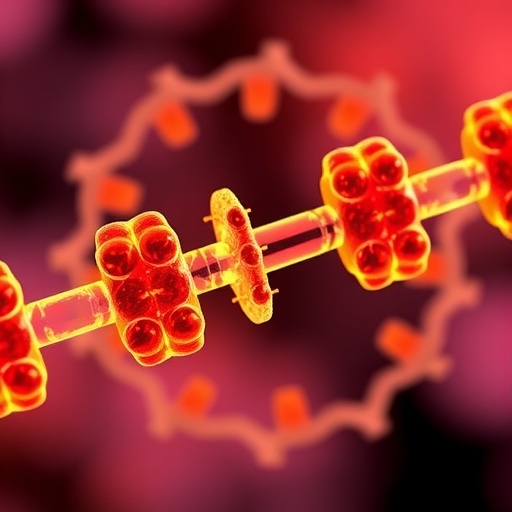In a groundbreaking study published recently in Nature, scientists have unveiled a pivotal mechanism that ensures the fidelity of chromosome transmission during the formation of human egg and sperm cells. This discovery illuminates how chromosomes maintain their vital connections through a process known as meiotic crossover, a mechanism critical to preventing fertility issues, miscarriages, and genetic disorders.
The genesis of human life hinges on the precise orchestration of meiosis, a specialized type of cell division that produces gametes—eggs in females and sperm in males—with exactly half the usual number of chromosomes. Integral to this process are crossover events, where homologous chromosomes exchange DNA segments. Such exchanges not only diversify the genetic makeup received from the parents but also physically link chromosome pairs, securing their proper segregation into the resulting gametes.
Dr. Neil Hunter and his research team at the University of California, Davis, have delineated the molecular choreography underlying these crossover events. Their inquiry delved into the function of double Holliday junctions—intricate DNA configurations that transiently form during recombination. The team identified a network of proteins that stabilize these structures, ensuring they resolve correctly to produce crossovers, rather than deteriorating prematurely and causing chromosomal missegregation.
One challenge in studying this phenomenon lies in its evolutionary conservation, which, while advantageous for cross-species insights, demands model organisms to dissect its molecular underpinnings. The researchers employed budding yeast, a well-established system for genetic and cellular studies. Through a novel “real-time genetics” approach, they selectively degraded specific proteins within the recombination machinery and analyzed the outcomes, allowing unprecedented visualization of the dynamic resolution of double Holliday junctions.
A key revelation from their work was the protective role of the cohesin complex, a protein assembly that shields these junctions from the dissolving action of the STR (structure-specific endonuclease) complex, known as the Bloom complex in humans. This protection preserves the double Holliday junctions long enough to ensure proper crossover formation. Deficient protection leads to crossover failures, which in humans can result in eggs or sperm with an incorrect chromosome number, a condition known as aneuploidy.
In females, the stakes are particularly high. Unlike sperm cells, which complete their division rapidly after meiosis initiates, oocytes pause their development for decades at a stage where chromosomes remain linked by crossovers. This prolonged arrest mandates robust maintenance of crossover connections to avoid chromosomal errors during the eventual completion of meiosis in ovulation. Improper maintenance is associated with increased risks of infertility, recurrent miscarriage, and congenital abnormalities such as Down syndrome, caused by extra copies of chromosome 21.
This research not only deepens our comprehension of the molecular safeguards that maintain chromosomal integrity during gametogenesis but also lays the groundwork for advancements in reproductive medicine. A molecular-level understanding could facilitate new diagnostic tools to detect crossover-related abnormalities and inspire therapeutic strategies to ameliorate infertility and genetic disease risks.
The multidisciplinary study leveraged cutting-edge facilities, including the UC Davis Proteomics Core Facility for protein analysis, the MCB Light Microscopy Imaging Facility for detailed visualization of chromosome structures, and the Genome Center for genetic sequencing and manipulation. Contributions from a spectrum of scientists, including graduate and undergraduate students, highlight the collaborative nature of modern genetic research.
Funding from established institutions such as the National Institutes of Health, the Howard Hughes Medical Institute, and cancer research foundations underscores the biomedical significance of this work. The research team’s dedication to unravelling the complexities of homologous recombination serves as a testament to how model organism studies can have profound implications for human health and reproduction.
As scientists continue to explore the intricacies of crossover formation and maintenance, this landmark discovery offers hope that future interventions could mitigate age-related fertility decline in women and reduce the incidence of chromosomal disorders. By protecting the delicate double Holliday junctions, nature elegantly preserves the continuity of genetic information across generations, a dance of molecules crucial for life itself.
Subject of Research: Cells
Article Title: Protecting double Holliday junctions ensures crossing over during meiosis
News Publication Date: 24-Sep-2025
Web References: http://dx.doi.org/10.1038/s41586-025-09555-1
Image Credits: Hunter lab/UC Davis
Keywords: Molecular genetics, Oocytes, Sexual reproduction, Genetic recombination, Human reproduction




